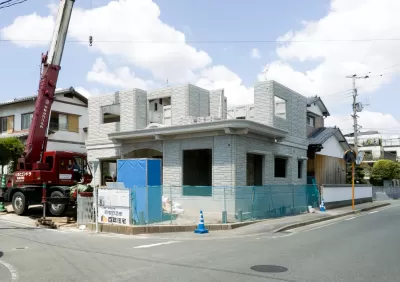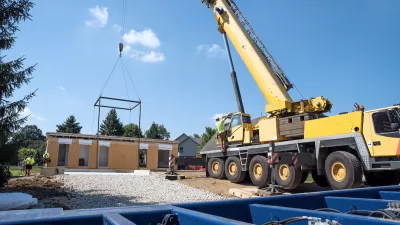When it comes to prefabricated housing, Japan is far ahead of the rest of the world. Will techniques from Japan's efficient modular home manufacturers inform a growing prefab industry in the United States?

Nate Berg takes a deep dive on Japan's unique prefab housing industry. "This approach to construction is becoming almost mainstream in many parts of the world—from Sweden to Germany to Australia. But the world leader in prefabricated housing is undoubtedly Japan. More than 15 percent of the nearly 1 million new homes and apartments built there last year were made inside factories [...]"
In the United States, on the other hand, only about 2 percent of single family homes constructed each year are modular. But that may change. "With advanced robotics, automation, and digital building information technologies—and increasing concern nationwide about the affordability of urban housing—factory-built housing once again seems poised for wider adoption."
Berg discusses the postwar origins of Japan's modular homes, how they've evolved, and how Japanese firms mass-produce housing components on the factory floor. "Typical prefab homes in Japan cost usually in the $300,000s, comparable to conventionally built houses."
While there are some notable prefab projects in the works here in the U.S., like Brooklyn's 461 Dean, "prefab or partially pre-built homes may make their strongest inroads into the current U.S. housing market as a solution to non-conventional housing needs," including housing the homeless or rebuilding after natural disaster.
FULL STORY: Preparing for our prefab future

Maui's Vacation Rental Debate Turns Ugly
Verbal attacks, misinformation campaigns and fistfights plague a high-stakes debate to convert thousands of vacation rentals into long-term housing.

Planetizen Federal Action Tracker
A weekly monitor of how Trump’s orders and actions are impacting planners and planning in America.

In Urban Planning, AI Prompting Could be the New Design Thinking
Creativity has long been key to great urban design. What if we see AI as our new creative partner?

King County Supportive Housing Program Offers Hope for Unhoused Residents
The county is taking a ‘Housing First’ approach that prioritizes getting people into housing, then offering wraparound supportive services.

Researchers Use AI to Get Clearer Picture of US Housing
Analysts are using artificial intelligence to supercharge their research by allowing them to comb through data faster. Though these AI tools can be error prone, they save time and housing researchers are optimistic about the future.

Making Shared Micromobility More Inclusive
Cities and shared mobility system operators can do more to include people with disabilities in planning and operations, per a new report.
Urban Design for Planners 1: Software Tools
This six-course series explores essential urban design concepts using open source software and equips planners with the tools they need to participate fully in the urban design process.
Planning for Universal Design
Learn the tools for implementing Universal Design in planning regulations.
planning NEXT
Appalachian Highlands Housing Partners
Mpact (founded as Rail~Volution)
City of Camden Redevelopment Agency
City of Astoria
City of Portland
City of Laramie





























